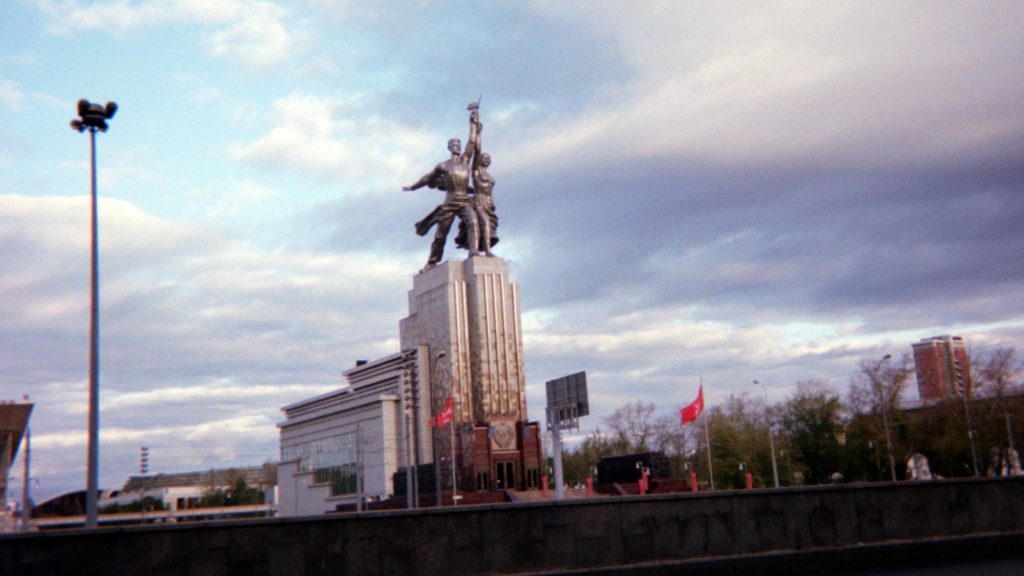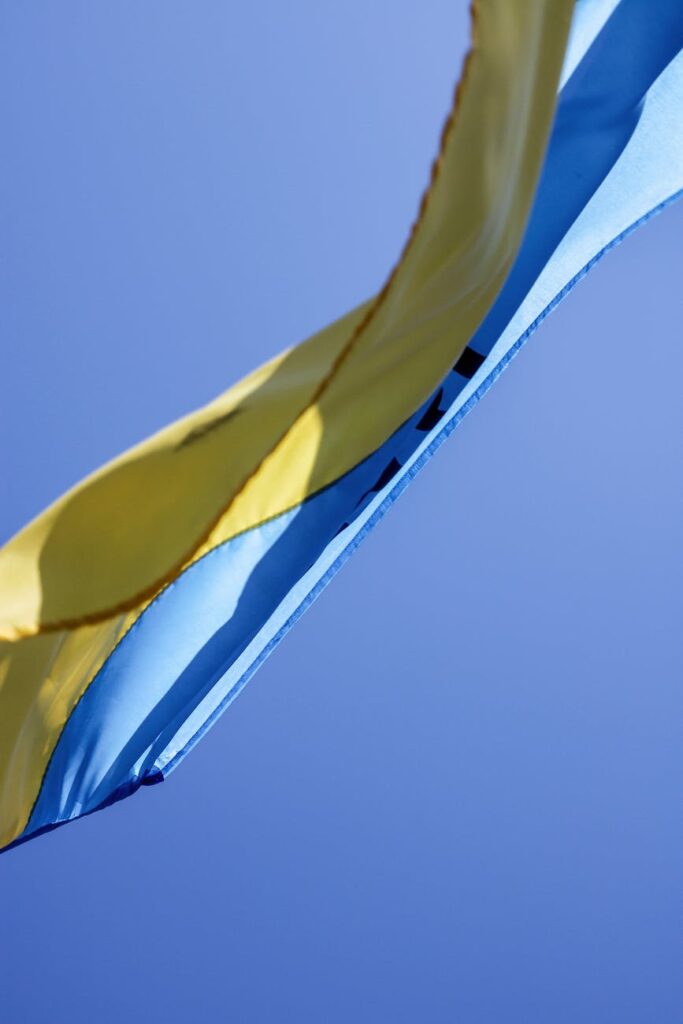
By Alexander Hill, Canadian Dimension, 12/8/23
I used to have some respect for elements of the mainstream news media. While that respect has eroded gradually over time, it has been coverage of the war in Ukraine that has finally destroyed what hope I had for corporate journalism. When it comes to Ukraine and Russia, it is left to outlets like Canadian Dimension to question narratives that seem to be lifted straight out of government press releases in Washington or Kyiv.
One of those narratives claims that, bit by bit, a Western-backed Ukraine is bringing down its larger Russian neighbour in a David and Goliath struggle. As well-known historian and Yale professor Timothy Snyder recently implied in a piece for the Guardian, all the Ukrainians need is a few more ‘queens’ on the chessboard and they can win the day. The piece makes little mention of Russia—as if more equipment and willpower alone are enough to bring ‘victory’ regardless of the state of affairs on the other side of the frontline.
I can tell you now—both from a professional analysis of the situation as a military historian specializing in Russia and first-hand experience during multi-week trips there in both October 2022 and November 2023—that Russia is a long way from being beaten and in many ways is in a stronger position today than it was at the end of last year. But getting that information out into the mainstream press is becoming more and more difficult—perhaps suggesting that the Western crusade against Russia, using Ukraine as a proxy, is not going to plan. Meanwhile, both Ukrainians and Russians are being killed by the thousands in a war in which neither side is likely to achieve a clear ‘victory.’
One can analyze Russian media and opinion polls from afar all one wants, but the picture one gains of the situation in Russia is incomplete without actually spending any time there. The first time I visited Russia during the war was during a nearly three-week trip back in October 2022—just over a year ago. At that time things were very different than they are today. Back in September 2022 the Russian government had just announced a wave of mobilization in the face of Ukrainian battlefield successes, not only initially on the Kyiv axis, but also in the north-east near Kharkiv. In the face of realities on the ground Russian forces subsequently gave up territory on the Western bank of the Dnieper River. In the aftermath of these events the mood in Moscow—and indeed in Murmansk where I also spent some time last fall—was relatively sombre as Russians came to terms with the fact that the ‘Special Military Operation’ was more like a fully-fledged war than was initially portrayed—a war that had now provoked a call-up of reservists and was clearly not going to be over in the near future.
In the aftermath of the announcement of a mobilization thousands of younger urban Russians fled the country to avoid being called up and to join those who had already left in order to continue working for foreign companies forced to transfer their operations to neighbouring countries in the face of Western sanctions. Although in many ways life in both Moscow and Murmansk went on as normal—with a few shuttered Western shops and the absence of many Western brands on supermarket shelves being two noticeable realities—under the surface there was certainly a growing sense of unease. Now, however, just over a year later, much of that foreboding has dissipated.
Since the fall of 2022 Russia has fought off the much-vaunted Ukrainian counteroffensive, which was supported by some of the latest equipment that NATO could provide. The Russian armed forces that threw themselves forward with reckless abandon and insufficient preparation in the spring of 2022 on the Kyiv axis soon learned their lesson—the Ukrainian armed forces were not going to be steamrolled and a more methodical approach was called for. Very quickly, the Russian army regrouped, reorganized and much more methodically advanced—gaining significant territory in the east, most of which they still hold.
The mobilization of September 2022 turned out not to be on the scale that many Russians feared—it was quite clear that many young men were not going to be called up and many have now returned to the country. Some of them are opposed to the war on political and moral grounds, but it is difficult to gauge anti-war sentiment given the Russian government’s near total crackdown on dissent. To top up the tens of thousands mobilized in the fall Moscow decided to offer pay and conditions for those signing up for the armed forces that are enough to transform the lives of the families of those from the provinces and rural areas who have signed up in their thousands. As in Ukraine, how many are being killed remains a closely guarded secret.
Alongside high pay for soldiers (approximately 14 times higher than the median salary in some regions of Russia) Russian propaganda campaigns focus on ‘national projects,’ with new schools and hospitals being showcased in short infomercials on television. Where the money is coming from remains unclear. Inflation may be high, but there is abundant employment in the cities and for most life is far better than it was a couple of decades ago after the collapse of the Soviet Union. Vladimir Putin continues to enjoy sky-high public-approval ratings, and most Russians couldn’t care less about upstarts like Yevgeny Prigozhin or the oligarchs who got fat on the privatizations that followed the collapse of communism and who are occasionally picked off for stepping out of line.
Prigozhin’s abortive mutiny and subsequent demise seem to have contributed to a strengthening of Putin’s position. Even according to polling by the Levada Center, which is deemed a ‘foreign agent’ by the Russian government, the president’s approval rating is now above 80 percent, up from lows of around 60 percent immediately before the war. It doesn’t matter whether the pollsters are within or outside Russia—support for the war effort is evidently high.
Western sanctions were supposed to bring the Russian economy to its knees, but that clearly hasn’t happened. Although sanctions have hit the economy hard in some sectors (especially the high-tech industries), in others Russia has effectively found alternatives or successfully substituted Russian products. Fast-food chain McDonald’s has become ‘Vkusno i tochka’ (literally translatable as ‘Tasty and On Time’) with a logo reminiscent of an ‘M’ that not only reminds customers of its origins but in a way sticks a finger up at the West. The non-Western world can supply Russia with all the tea and coffee and other similar products it needs—and even many Western goods remain on the shelves as if there weren’t any sanctions.
There is a confidence in the air in Russia’s capital—and indeed in Ryazan, home of the Russian airborne forces in which I also spent a number of days last month—that was clearly lacking a year ago. Many Russians I have spoken to clearly believe that it is only a matter of time before the Ukrainian military collapses, as Russian television shows scenes of the Ukrainian authorities rounding up unwilling conscripts and pleas from Volodymyr Zelensky for more Western aid. Meanwhile, much of the Western press still continues to pretend that it is Russia that must be close to collapse—a wishful thinking that is increasingly far from the truth.
For many Russians the war now is an existential one. The Russian government has successfully argued that the war is aimed at a West intent on ‘cancelling’ Russia and its culture using Ukraine as a vehicle. The villain of the piece is undoubtedly the United States, towards which the vast majority of Russians polled by Levada continue to express negative attitudes. US focus on Israel’s war in Gaza has undoubtedly deflected some of the West’s attention from Ukraine—with the Russian press only too pleased to point out the hypocrisy of US support for an Israel only too willing to inflict casualties on the civilian population in Gaza at a rate far outstripping anything the Russian armed forces have committed in Ukraine.
Although it is specifically Russian language and culture that is seen to be being ‘cancelled’ in Ukraine and indeed the Baltic Republics as well, Russia itself has now started to focus much more on the idea of the Russian state as a vessel not only for Russian culture but all of the cultures of Russia—with a new racial tolerance apparent both in the media and on the street. This may to some extent reflect a cynical need for more troops, but it is nonetheless real. At a recent exhibition showcasing the activities and achievements of Russia’s regions in Moscow smaller regions such as Chechnya and Ingushetia have been given as much exhibition space as any other larger regions. The Russian media hails the heroism of soldiers from villages thousands of kilometres from the European part of the country who are serving a wider, ethnically diverse Russia. In St. Petersburg a recent conference promoting cultural diversity in the world—and the value of Russian culture as part of that diversity—was attended by hundreds of delegates from tens of countries, highlighting that Russia’s isolation from the West isn’t isolation from much of the remainder of the world.
That doesn’t mean that tolerance is now the order of the day in Russia. Obviously public opposition to the war is stamped out quickly, with the few celebrities who publicly display opposition soon being labelled ‘foreign agents.’ Even the famous singer Alla Pugacheva is not immune, although the Russian government has been wary of punishing her given her almost legendary status. The tolerance, even celebration, of Russia’s national minorities such as the Chechens has a corollary in that such ethnic groups are typically as, if not more, socially conservative than the Russian Orthodox Church, and willing to get behind the resurgence of ‘traditional values’ that means that Western-associated liberalism is in the crosshairs. A popular whipping boy is the LGBTQ movement, recently declared ‘extremist’ by the Supreme Court. ‘Anti-woke’ attacks on symbols of the culture war in the West seem to go down well with a vast majority of Russians, and contribute to a sense of Russia being a moral bastion again perceived Western ‘social decadence.’
As the bloodbath in Ukraine continues Russian morale clearly remains high. Russia has upped its game but is far from fully mobilized for war. In the face of the awoken bear some sort of mythical Ukrainian victory that would see it recapture territory lost since 2014 is increasingly unlikely, no matter how many tanks and fighter aircraft the West will deliver to Kyiv.
The more time passes the more urgent it becomes for the West to encourage Ukrainian leaders to restart negotiations with Russia that were cut short in the spring of 2022. Since then tens of thousands of lives have been lost on both sides. Many more may be lost for little change of the frontline in something akin to the later stages of the Korean War. It is now more than ever time to act to prevent the loss of tens of thousands more lives in a war that isn’t going anywhere soon, and in which there is unlikely to be a silver bullet for either side. It is unquestionably time to start talking about the sort of peace that will be a just one for all of those involved—whether they identify themselves as Ukrainian or Russian, and live in Lviv or Donetsk.
